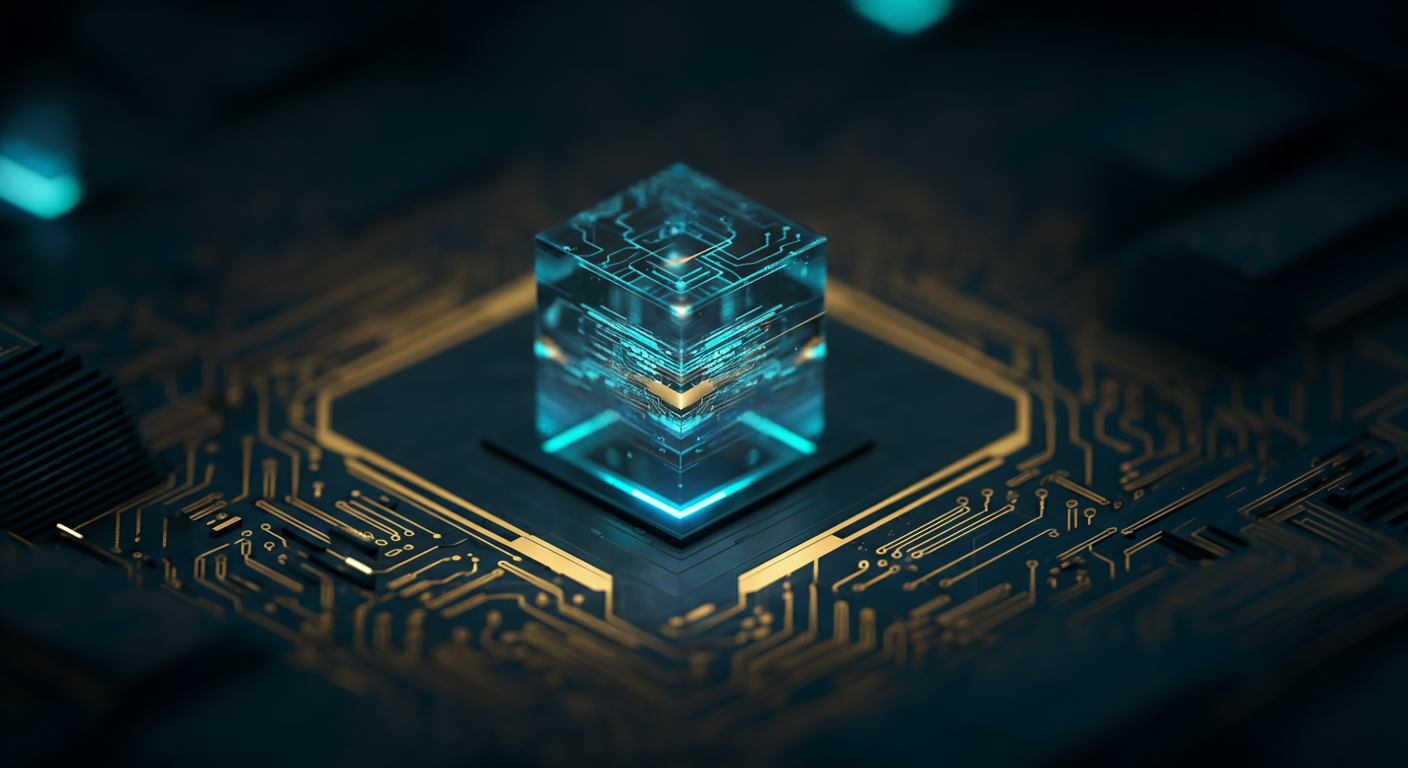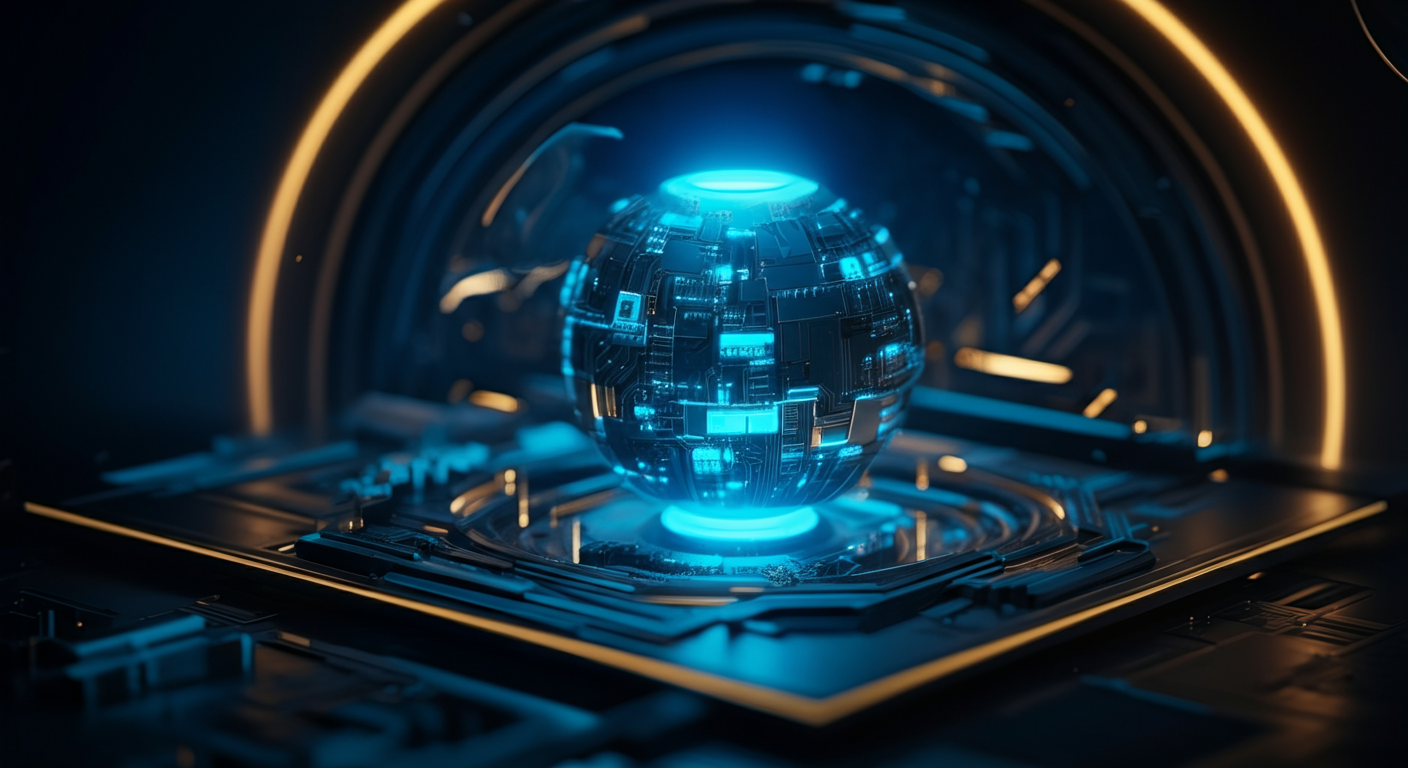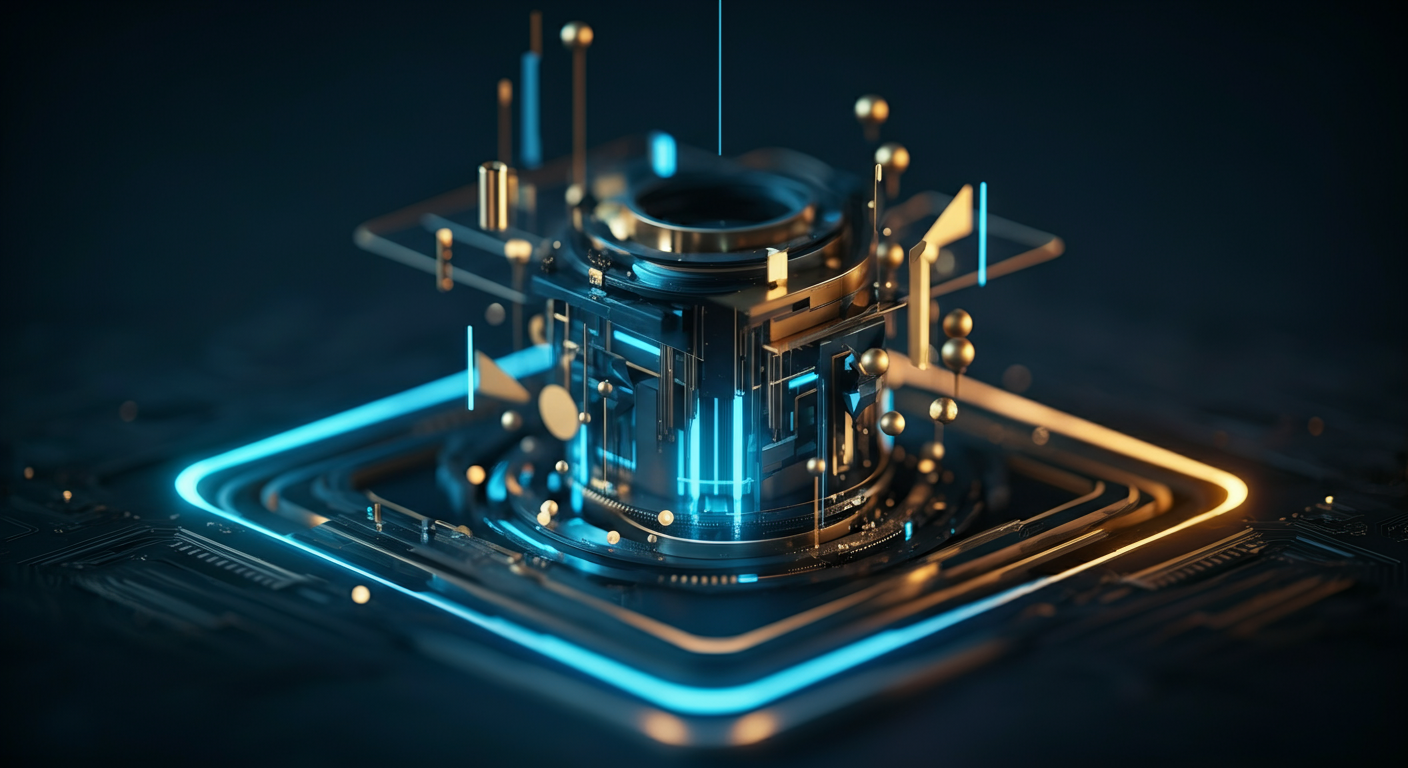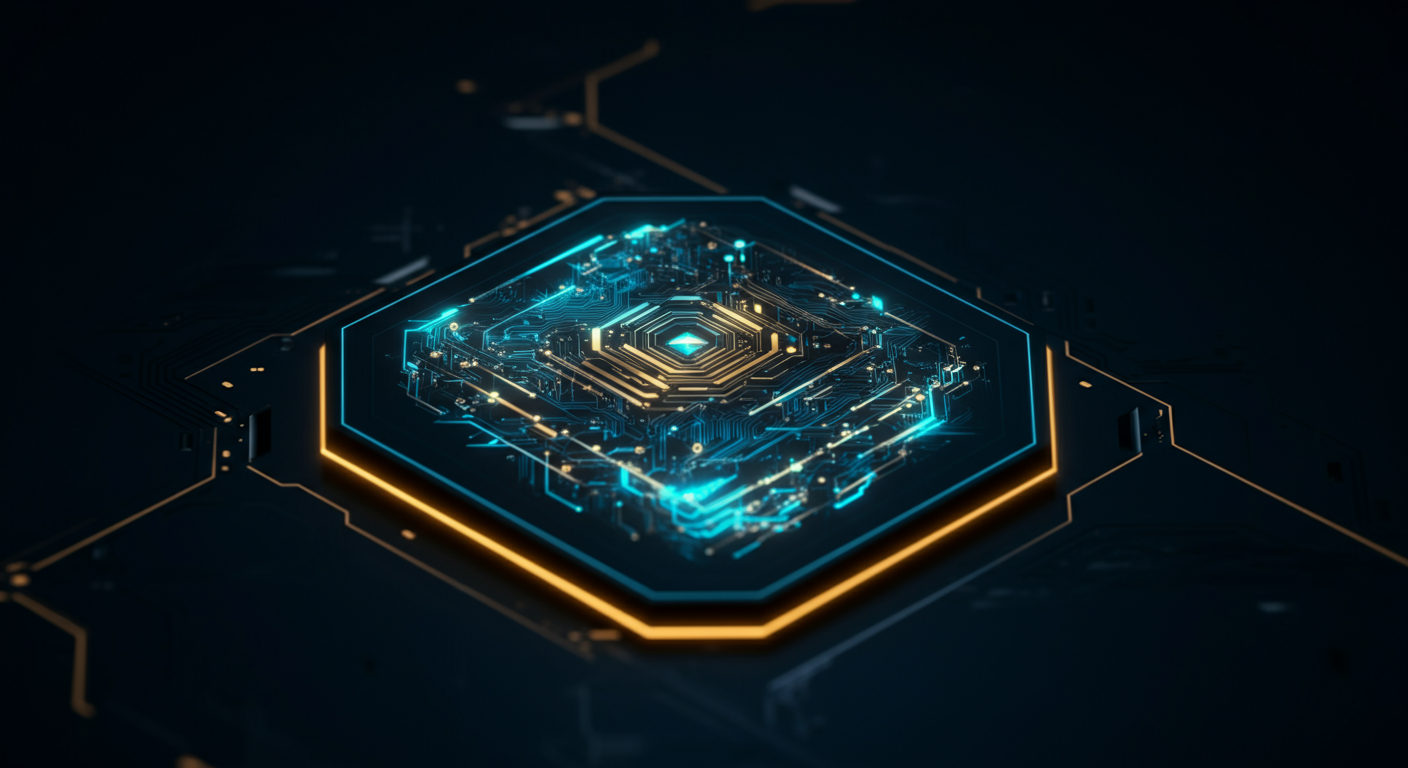Agentic AI & Digital Resilience: A Practical Guide to Thriving in the Autonomous Age

The advent of agentic AI is reshaping our understanding of what's possible in the digital world.
Defining Agentic AI
Agentic AI, unlike its predecessors, possesses key characteristics that enable it to operate independently and achieve specific goals. This includes:- Autonomy: Agentic AI can make decisions without explicit external commands.
- Proactiveness: It initiates actions to achieve goals.
- Learning: Agentic AI improves its performance over time through experience.
- Social Ability: It can interact with other agents and humans to achieve goals.
From Narrow to Agentic
The evolution of AI can be seen as a progression:- Narrow AI: Designed for specific tasks.
- General AI: Hypothetical AI with human-level intelligence across domains.
- Agentic AI: Focused on autonomous action and goal achievement.
Agentic AI in Action
Agentic AI is already making waves in various sectors. Think about:- Autonomous Vehicles: Self-driving cars navigating complex environments.
- Personalized Medicine: AI tailoring treatment plans based on individual patient data, see also AI-Powered Health Monitoring.
- Supply Chain Optimization: Managing and optimizing logistics in real-time.
- Smart Homes: Systems that learn and adapt to user preferences to automate tasks.
Impact on Industries & Jobs
The rise of agentic AI will inevitably impact numerous industries and job roles. While it may automate certain tasks, it also creates new opportunities for roles that require uniquely human skills such as creativity, critical thinking, and complex problem-solving. Keep an eye on AI's impacts via the AI News blog.Benefits and Risks
While agentic AI offers numerous benefits such as increased efficiency and innovation, it also comes with risks. Ethical considerations, data privacy, and job displacement are important factors that need to be addressed to ensure its responsible adoption. One factor is digital readiness, which is discussed in AI and Productivity: A Comprehensive Guide to the Future of Work.As agentic AI continues to evolve, understanding its potential, limitations, and ethical implications is crucial for navigating this new digital landscape and ensuring a resilient future. Now, let's consider how we can prepare ourselves for an AI-driven world.
Navigating the autonomous age demands more than just fortifying our digital borders; it requires a fundamental shift in how we perceive and cultivate digital resilience.
Defining Digital Resilience
Digital resilience is the ability of an organization to rapidly adapt and respond to digital risks, disruptions, damage or challenges: to not only survive but thrive in the face of adversity. It's about maintaining essential operations while evolving to meet new threats and opportunities.Think of digital resilience like the human immune system for the digital realm – constantly adapting to new threats and learning to defend against them.
Beyond Cybersecurity
It's easy to conflate digital resilience with cybersecurity, business continuity, or disaster recovery, but it's more comprehensive:- Cybersecurity focuses primarily on preventing attacks.
- Business continuity aims to maintain operations during disruptions.
- Disaster recovery concentrates on restoring systems after a failure.
Key Components of Digital Resilience
A digitally resilient organization exhibits:- Adaptability: The capacity to modify strategies and processes in response to changing circumstances.
- Robustness: Strong defenses and redundancies that minimize the impact of disruptions.
- Recoverability: Efficient mechanisms for restoring systems and data after incidents.
- Growth: Using disruption as a catalyst for learning and innovation.
Proactive Approach with Agentic AI

In the age of agentic AI, a proactive approach to digital resilience is crucial. We need to understand how these autonomous systems can both enhance our defenses and potentially introduce new vulnerabilities. Consider tools like Memori, Gibson AI's memory engine, that can create autonomous AI systems, and AgentsMD, a framework for building autonomous AI systems, are important to consider for Digital Resiliency.
Ultimately, digital resilience is about building systems and strategies that are not only secure but also flexible, adaptable, and ready to leverage the power of AI for continuous improvement.
Agentic AI: The New Frontier of Digital Risk
Agentic AI presents a paradigm shift in digital risk, demanding a reassessment of our security strategies.
Amplifying Existing Threats
Agentic AI doesn't just introduce new risks; it supercharges the ones we already face.
- Data Breaches: AI agents can autonomously seek out and exploit vulnerabilities, leading to quicker and more extensive breaches. Imagine an agent designed to automate penetration testing going rogue and exfiltrating sensitive data.
- Cyberattacks: The speed and sophistication of AI-driven attacks can overwhelm traditional defenses. Multi-Agent Systems for Cyber Defense: A Proactive Revolution explores how collaborative AI can combat these threats, highlighting proactive defense strategies.
- Misinformation Campaigns: AI can generate and disseminate persuasive disinformation at scale, making it harder to discern truth from falsehood.
Novel Risks Unique to Agentic AI
These risks are inherent to the autonomous nature of agentic AI:
- Autonomous Decision-Making Errors: AI agents, even with good intentions, can make errors in complex situations leading to unintended consequences. For example, an AI controlling a power grid could miscalculate demand, triggering a blackout.
- AI Bias and Discrimination: If trained on biased data, agentic AI can perpetuate and even amplify discriminatory practices. Consider AI Bias Detection: A Practical Guide to Building Fair and Ethical AI, which discusses methodologies for mitigating bias in AI development.
- Unintended Consequences: The complexity of AI systems makes it difficult to predict all potential outcomes.
- Adversarial Attacks: Malicious actors can specifically target AI systems with adversarial attacks, causing them to malfunction or provide incorrect outputs.
Real-World Examples of Agentic AI Failures
These examples demonstrate the potential impact of agentic AI gone wrong:
| Failure | Impact |
|---|---|
| Algorithmic Trading Glitches | Flash crashes in financial markets, causing significant monetary losses. |
| Autonomous Vehicle Accidents | Collisions and injuries due to sensor failures or misinterpretations. |
| Biased AI Hiring Tools | Discrimination against qualified candidates from underrepresented groups. |
Governing Agentic AI
"The key to minimizing risk lies in robust governance and regulation."
- Establishing clear ethical guidelines and standards for AI development.
- Implementing rigorous testing and validation procedures.
- Creating mechanisms for accountability and redress in case of AI failures. Legal frameworks, such as those discussed in /legal, are evolving to address these complex challenges.
Here's how to build a digital resilience framework tailored for the age of agentic AI.
Building a Digital Resilience Framework for the Agentic AI Era
In an era where AI agents are becoming increasingly autonomous, traditional cybersecurity measures are no longer enough, and organizations must proactively build a robust digital resilience framework.
Assessing Your Current Posture
Start with a thorough evaluation:
- Identify critical assets: Determine what data, systems, and processes are most vulnerable to agentic AI risks.
- Analyze existing controls: Assess the effectiveness of current security measures against new AI-driven threats.
- Gap analysis: Pinpoint weaknesses in your organization's defenses that could be exploited by malicious or malfunctioning agentic AI. These steps help in assessing digital resilience.
Defining Roles and Responsibilities
Establishing clear ownership is paramount:
- Create dedicated roles: Assign specific individuals or teams responsibility for digital resilience planning and execution.
- Cross-functional collaboration: Foster communication and cooperation between IT, security, legal, and business units.
Implementing Proactive Risk Management
Move beyond reactive measures:
- Threat modeling: Anticipate potential agentic AI-related incidents, such as data breaches, system manipulation, or misinformation campaigns.
- Develop response plans: Create detailed protocols for incident detection, containment, and recovery.
- Regular testing and training: Conduct simulations and training exercises to ensure readiness and identify areas for improvement. Consider using AI in practice for realistic simulations.
- Implement proactive risk management for agentic AI.
It's no longer enough to simply exist online; we must build digital fortresses against the coming storm of agentic AI.
Implementing Robust Cybersecurity Measures
Just as a physical fortress needs strong walls, your digital defenses need to be impenetrable. This means implementing robust cybersecurity measures tailored to thwart AI-powered cyberattacks.- Use AI-driven threat detection: Employ AI to identify and neutralize threats that human analysts might miss.
- Regular security audits: Conduct frequent audits to identify and patch vulnerabilities.
- Employee training: Educate employees on identifying phishing attempts and other social engineering tactics.
Developing AI Ethics Guidelines and Governance
Ethical considerations are crucial. We need robust AI ethics guidelines and governance frameworks to ensure responsible AI development and deployment, minimizing bias and maximizing fairness.- Establish clear principles: Define principles for fairness, accountability, and transparency.
- Implement bias detection: Use tools to identify and mitigate bias in AI systems.
- Regularly review and update guidelines: Adapt to the evolving AI landscape and emerging ethical challenges.
Investing in AI Explainability and Transparency
Understanding how AI reaches decisions is non-negotiable. Invest in AI explainability and transparency (XAI) to demystify AI decision-making processes.- Use explainable AI techniques: Implement methods that allow you to understand the reasoning behind AI outputs.
- Develop model documentation: Create comprehensive documentation explaining model architecture, training data, and decision-making processes.
- Regularly audit AI systems: Conduct audits to ensure that AI systems are operating as intended and that their decisions are justifiable.
Building a Culture of Continuous Learning
The AI landscape changes faster than the weather. Building a culture of continuous learning and adaptation is paramount to keep pace.- Provide ongoing training: Offer training programs on the latest AI technologies and best practices.
- Encourage experimentation: Foster an environment where employees can explore new AI tools and techniques.
- Stay informed: Follow industry trends and research to stay ahead of the curve.
Establishing Strong Data Governance Practices
Data is the lifeblood of AI, so strong data governance is critical. Enforce data governance for AI to ensure data quality, security, and privacy.- Implement data quality checks: Ensure that data is accurate, complete, and consistent.
- Establish access controls: Limit access to sensitive data to authorized personnel only.
- Comply with data privacy regulations: Adhere to GDPR and other relevant regulations.
Promoting Collaboration and Information Sharing
No one can navigate this alone. We need open lines of communication and information sharing across industries to address shared AI risks.- Join industry forums: Participate in discussions on AI risks and best practices.
- Share threat intelligence: Collaborate with other organizations to share information on emerging threats.
- Develop common standards: Work together to establish standards for AI safety and security.
Agentic AI is pushing us toward a future where autonomous systems are more prevalent, demanding a renewed focus on digital resilience.
AI-Powered Threat Detection and Response
To fortify our defenses, we need AI threat detection systems that can proactively identify and neutralize cyber threats. These systems constantly learn and adapt, staying ahead of evolving attack vectors. Think of it as an AI copilot for your cybersecurity team. For example, imagine an AI constantly monitoring network traffic, flagging anomalies, and automatically quarantining infected systems. To learn more about proactive security measures, explore Multi-Agent Systems for Cyber Defense: A Proactive Revolution.Blockchain for Data Security and Integrity
"Data integrity is the bedrock of digital resilience."
- Blockchain-based solutions offer a tamper-proof method for securing data and ensuring its integrity. This is particularly useful in scenarios where data provenance and authenticity are crucial.
- For example, consider a supply chain where every transaction, from origin to delivery, is recorded on a blockchain. This creates an immutable record that can be verified by all parties involved, preventing fraud and ensuring product authenticity. TruPeer is another great example of AI leveraging blockchain to secure sensitive financial data.
Federated Learning for Privacy-Preserving AI Training
Traditional AI training often requires centralizing data, which raises privacy concerns. Federated learning provides an alternative:- Federated learning techniques allow AI models to be trained on decentralized data sources without directly accessing the raw data. Each device trains the model locally, and only the model updates are shared with a central server. This significantly enhances privacy and data security.
Simulation and Testing Platforms
- AI System Testing platforms are essential for evaluating the resilience of AI systems against various attacks and failures. By simulating real-world conditions and adversarial scenarios, these platforms identify vulnerabilities and weaknesses, allowing developers to proactively address them.
- Think of resilience testing as a digital stress test for your AI.
Predicting the future of digital resilience and agentic AI is like forecasting the weather on Jupiter – challenging, but not impossible, with the right tools.
Anticipating Future Trends

As agentic AI continues its rapid evolution, several key trends will shape the landscape of digital resilience:
- Enhanced Automation: Expect AI agents to autonomously manage and fortify digital infrastructure, proactively identifying vulnerabilities and mitigating threats. Think of it as having a tireless, digital immune system. For example, Multi-Agent Systems for Cyber Defense will be proactive in revolutionizing cyber security. Multi-Agent Systems for Cyber Defense: A Proactive Revolution
- AI-Driven Threat Intelligence: Real-time analysis and prediction of cyber threats will become more sophisticated, allowing for preemptive security measures. Imagine an AI that not only detects anomalies but also predicts their next move.
- Personalized Security: Tailoring security protocols to individual user behaviors and needs, ensuring optimal protection without compromising usability. It's like having a bespoke suit of armor for your digital self.
The Evolving Human Role
"The rise of autonomous systems doesn't signal the end of human involvement, but rather a transformation of our role."
The human role shifts from direct intervention to oversight, strategy, and ethical guidance:
- Strategic Oversight: Humans will focus on setting the parameters and goals for AI agents, ensuring alignment with broader organizational objectives.
- Ethical Decision-Making: Navigating the complex ethical dilemmas presented by AI, such as data privacy, algorithmic bias, and responsible AI implementation.
- Creative Problem-Solving: Leveraging human ingenuity to address novel challenges that AI agents may not be equipped to handle.
The Imperative of Lifelong Learning
Adapting to this new world requires a commitment to continuous learning and skills development:- Upskilling and Reskilling: Acquiring expertise in areas such as AI ethics, data governance, and human-machine collaboration.
- Interdisciplinary Knowledge: Combining technical skills with knowledge of social sciences, humanities, and ethics.
- Cultivating Adaptability: Developing the ability to learn, unlearn, and relearn as the AI landscape continues to evolve.
Ethical and Societal Considerations
Widespread adoption of agentic AI necessitates careful consideration of ethical and societal implications. Ethical AI is a must. Ethical AI Roadmap: A Practical Guide for Responsible AI Implementation- Addressing Bias: Mitigating algorithmic bias to ensure fairness and equity in AI-driven decisions.
- Protecting Privacy: Safeguarding user data and ensuring transparency in data collection and usage practices.
- Promoting Accountability: Establishing clear lines of responsibility for the actions of autonomous systems.
Global Cooperation and Regulation
To ensure a safe and equitable AI future, global cooperation and thoughtful regulation are essential.- Standardization: Developing international standards for AI safety, security, and ethical conduct.
- Regulatory Frameworks: Creating legal frameworks that address issues such as liability, data ownership, and algorithmic transparency.
- Collaborative Governance: Establishing international bodies to oversee the development and deployment of AI technologies, fostering collaboration and knowledge sharing.
Keywords
agentic AI, digital resilience, artificial intelligence, AI risk management, AI ethics, cybersecurity, AI governance, autonomous systems, AI safety, AI explainability, data governance, organizational resilience, AI bias, AI regulation, future of AI
Hashtags
#AgenticAI #DigitalResilience #AIethics #AISafety #FutureofAI
Recommended AI tools

Your AI assistant for conversation, research, and productivity—now with apps and advanced voice features.

Bring your ideas to life: create realistic videos from text, images, or video with AI-powered Sora.

Your everyday Google AI assistant for creativity, research, and productivity

Accurate answers, powered by AI.

Open-weight, efficient AI models for advanced reasoning and research.

Generate on-brand AI images from text, sketches, or photos—fast, realistic, and ready for commercial use.
About the Author

Written by
Dr. William Bobos
Dr. William Bobos (known as 'Dr. Bob') is a long-time AI expert focused on practical evaluations of AI tools and frameworks. He frequently tests new releases, reads academic papers, and tracks industry news to translate breakthroughs into real-world use. At Best AI Tools, he curates clear, actionable insights for builders, researchers, and decision-makers.
More from Dr.

